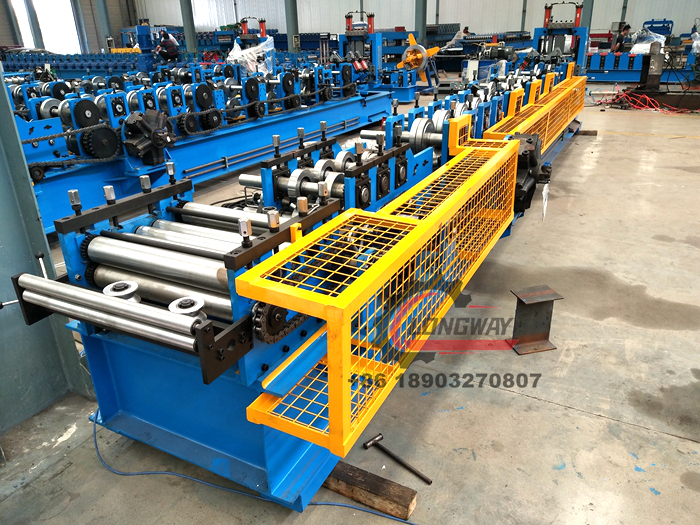Perforated Panel Roll Forming Equipment for Efficient Metal Fabrication Solutions
Perforated Panel Roll Forming Machines Revolutionizing Modern Construction
In recent years, the construction industry has experienced significant advancements, driven largely by the need for efficient, cost-effective building materials. One of the standout innovations in this domain is the perforated panel roll forming machine, a piece of equipment that has transformed the way we approach architectural design and implementation.
Understanding Perforated Panels
Perforated panels are sheets that have been punctured with a pattern of holes, which can vary in size and shape depending on aesthetic and functional requirements. These panels are commonly made from metals like aluminum, steel, or even plastics. Their unique design provides several advantages, including improved aesthetics, reduced weight, and enhanced acoustic or thermal performance. The versatility of perforated panels allows them to be used in a wide range of applications, from facades and ceilings to partition walls and decorative elements.
The Role of Roll Forming Machines
Roll forming is a continuous bending process in which a long strip of metal is passed through a series of rollers to create complex cross-sectional shapes. The incorporation of perforation into this process has revolutionized the way manufacturers produce customized panels. A perforated panel roll forming machine automates the entire production process, significantly reducing labor costs and increasing production efficiency while maintaining high precision in the dimensions of each panel.
The typical process involves feeding a flat metal sheet into the machine, where it is shaped and then perforated according to specific designs. This method allows for the creation of custom patterns that can meet various aesthetic and functional needs, catering to the unique demands of architects and builders. The speed of the roll forming process, combined with its adaptability, means that large volumes of perforated panels can be produced rapidly without compromising quality.
Advantages of Perforated Panel Roll Forming Machines
perforated panel roll forming machine

1. Cost Efficiency By automating the production of perforated panels, manufacturers can achieve considerable savings in labor and material costs. The precision of the machines ensures minimal waste, as each sheet is utilized effectively.
2. Customization One of the standout benefits of using perforated panel roll forming machines is the level of customization they offer. Designers can create an array of patterns and sizes to fulfill specific project requirements, allowing for more creative freedom in architectural design.
3. Durability and Performance Perforated panels produced from high-quality metals are robust and can withstand adverse weather conditions. Their perforation also provides functional properties, such as improved air circulation and sound dampening, making them ideal for both interior and exterior applications.
4. Environmental Considerations The production process is relatively green, as it can be optimized to minimize waste. Additionally, metal panels are recyclable, contributing to sustainable building practices.
Applications in Modern Construction
Perforated panels created by roll forming machines find numerous applications in modern construction. They are prevalent in commercial buildings, providing not only aesthetic appeal but also functionality in terms of ventilation and natural light. In residential projects, they can be used for decorative facades or privacy screens. Furthermore, industries such as transportation and infrastructure utilize these panels for noise barriers and protective enclosures.
Conclusion
As the construction landscape continues to evolve, the role of perforated panel roll forming machines becomes increasingly vital. They represent a pivotal convergence of technology and design, enabling architects and builders to push the boundaries of creativity while maintaining efficiency and sustainability. With the growing demand for customized building materials, it is evident that these machines will remain at the forefront of construction innovation in the years to come.
-
Roof Panel Machines: Buying Guide, Types, and PricingNewsJul.04, 2025
-
Purlin Machines: Types, Features, and Pricing GuideNewsJul.04, 2025
-
Metal Embossing Machines: Types, Applications, and Buying GuideNewsJul.04, 2025
-
Gutter Machines: Features, Types, and Cost BreakdownNewsJul.04, 2025
-
Cut to Length Line: Overview, Equipment, and Buying GuideNewsJul.04, 2025
-
Auto Stacker: Features, Applications, and Cost BreakdownNewsJul.04, 2025
-
Top Drywall Profile Machine Models for SaleNewsJun.05, 2025








